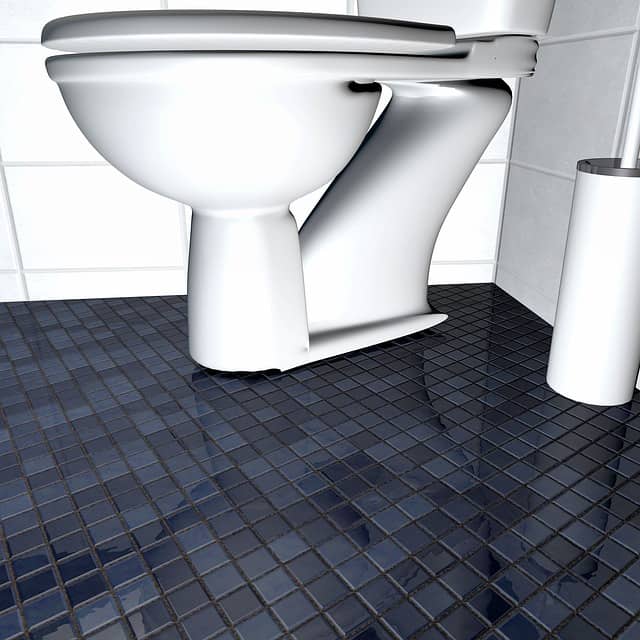Personally, if you’re considering switching over from a tank style water heater to a tankless water heater, I feel it’s a smart decision. That said, just because I think it’s a good idea doesn’t mean it’s the best decision in your situation. Everyone should do their own due diligence when considering something like this and I expect that’s why you are here.
There are many pros and cons to switching over to a tankless water heater. Pros: tankless water heaters last longer than traditional tank water heaters, tankless water heaters use less energy as they only heat water when hot water is needed, and they free up space compared to large bulky tanked water heaters. Tankless water heaters can also be repaired when required.
The list above isn’t all inclusive. In this article, I’ll expand on the points made above and will offer up more pros as well as some cons to having a tankless water heater in your home. If you’re ready to learn more, let’s get right to it.
The Pros to Using a Tankless Water Heater
Tankless water heaters will outlast tank style water heaters. Tankless water heaters have replaceable parts which helps them to outlast the life of a tank style water heater.
The bottom of the tankless water heater will not corrode and drop out causing flooding like a tank style water heater will over time.
Hot water never runs out when using a tankless water heater. When hot water in your home is being drawn for different purposes such as showers, washing clothes, washing dishes, etc., a tank style water heater will run out of hot water quickly. A tankless water heater will just keep heating water as needed as long as the heater itself was sized properly for the size of your family and home.
Tankless water heaters use less energy than tank style water heaters. Since tankless water heaters don’t have to continually keep a large tank of water hot, they use less energy. Tankless water heaters heat water on demand and therefore use less energy than tank style water heaters.
Tankless water heaters take up less room than a tank style water heater. A tankless water heater will free up space in your mechanical room. With the trend of smaller living spaces becoming more popular, considering a tankless water heater is a no-brainer.

Tankless water heaters are easy to fix and can usually be done by the homeowner. There are some instances where you might be required to reach out to a professional such as when it is a gas line or electrical issue. Otherwise, the homeowner should be able to troubleshoot and fix most tankless water heaters. Replaceable parts make this possible with tankless water heaters unlike tanked heaters where the whole unit has to be replaced.
Check out these tankless water heaters on Amazon. They can be delivered right to your door.
The Cons to Using a Tankless Water Heater
Tankless water heaters can be more expensive to purchase than a tank style water heater. This is especially true when you have an existing tank style heater and want to install a tankless in its place. The extra cost of installing new electrical and natural gas lines can add up quickly. One way around this would be to “rent” a tankless water heater. The upfront cost would be lower as you are not purchasing the unit outright, however, over time you would pay more for the rental than the unit is worth.
It should be noted that over time running the tankless water heater will cost less than if you had been using a tank style. This is because the tankless unit is not trying to keep 50-gallons or more of water heated 100% of the time.
If not sized properly, a tankless water heater might not be able to keep up with demand. If more hot water is being used than the unit can keep up with, obviously this means you aren’t going to have the hot water needed. This happens more often with tankless water heaters than tank style.
The way to prevent this from happening is to install a unit slightly larger than you feel is needed. More than one tankless water heater can be installed. Because of their smaller size, having more than one unit is much easier to accomplish than having tank style heaters.
If the power goes out, there will be no reserve tank to draw hot water from. Since tankless water heaters are on demand units, there obviously won’t be any hot water for you if the power happens to go out. With a tank style heater, there’ll be a tank full still available.
The water temperature can differ when being drawn from multiple plumbing fixtures. In a perfect world when one plumbing fixture is using hot water, the temperature should be where you set it to be. When multiple users are trying to access hot water, you might find the temps slightly different at these user points. This is mainly because of the volume of hot water being created on demand. A tank style water heater is drawing from 50-gallons or more of hot water where a tankless is drawing from a ½” or ¾” pex or copper line.
Tankless water heaters take slightly longer to deliver hot water to the plumbing fixture than a tank style water heater. As the saying goes “it’s all about the timing”. If you were to time how long it takes to have hot water delivered to a faucet between the two types of water heaters, you’d find tankless units take minimally longer. Once you get used to the timing, it’s not really a problem.
The cold water sandwich phenomenon is real. The cold water sandwich term is used when talking about hot water being delivered from a tankless water heater to a faucet for an example.
When you turn on the hot water, the unit kicks in to deliver that hot water. If you turn it off and on again, there’ll be differing temperatures of water in the water line between the heater and faucet. This means when you turn on the tap, the water temperature won’t be consistent – essentially, sandwiching the cooler temperature water between warmer temperatures. This isn’t typically a problem for tank style water heaters.

Are Tankless Water Heaters Worth the Cost?
Based on the information I have provided in this article, it’s now your decision as to whether a tankless water heater is worth the cost to you or not.
Part of your decision will be based on what you can afford, the other parts of your decision should be around how long you will be in your current home. You could, of course, have your own unique reasons for having a tankless water heater.
Is installing a tankless water heater a selling feature? (I say yes, it’s a selling feature). That’s another thing to consider. All of the upgrades you can do in your home will always be selling features.
My honest opinion is that a tankless water heater is worth the cost, if you’re going to be in your home for more than a few years or if you’re installing it to entice a future buyer.
Final Thoughts
The pros outweigh the cons when it comes to deciding on a tankless water heater, in my opinion. Yes, the cost is high to have a tankless water heater installed yet, so is installing a tank style water heater. If you don’t want to spend a lot of money buying your own, you can always find a company to rent from. They’ll come out and install your unit for you.
If you have a large family, you might want to consider installing a couple of units strategically placed in your home to ensure there’s always hot water available, regardless of consumption.
If you need a smaller unit for one bathroom (master ensuite), you can get those for a reasonable price. It’s something to consider.
And there you have it, my 6 pros and 6 cons for tankless water heaters. I hope I was able to help you with your decision. Good luck!
Recommended Posts
Tankless Water Heater Maintenance Tips (How to Descale)
Are Water Heater Insulation Blankets Worth Using?
What are the Pros and Cons of a Solar Water Heater?
What is a Water Heater Expansion Tank Used For? (Do You Need One?)



